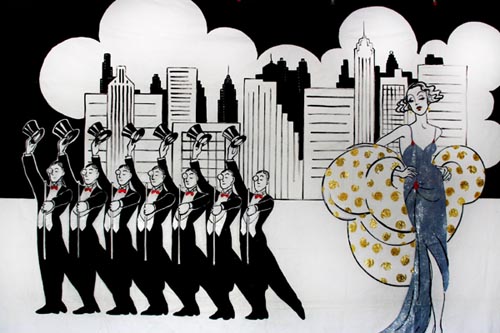Terms like “mass culture” and “consumer society,” help define the United States population during the 1920’s. Also known as the Roaring Twenties, this was time of change for many Americans. Whether social or political, the changes during this time were dramatic and unheard of until then. Americans began thinking alike, they began to purchase the same items, dance to the same music, and even use the same slang. Americans were apart of a changing economy, the wealth of the country nearly doubled during 1920 and 1929. The entire population was swept away by consumer items. Stores began to develop chains and advertise nationwide in order to gain more customers. The 1920’s inspired an entire generation to become more liberal with their behavior, attitudes, and even bodies.
Today let’s take a look a generation that helped change and redefine a brand new culture.
A New Woman Emerges

Photo: Glamour Daze
Many of you are probably familiar with the flapper, however have you ever considered where this term came from. The term flapper defines a certain type of woman that emerged during the 1920’s. You are most likely familiar with how these women looked at the time. They would bob their hair and wear short dresses and skirts, unlike the many women before them. This fashion statement was not only bold, it helped give women a sense of freedom that they haven’t previously experienced. This new women would drink and smoke whenever they’d like. They were also more liberal when it came to their own sexuality. In general, a flapper was defined as doing very “unladylike” things by the older generations. These characteristics do not completely define the flapper, nor did every single women adhere to this exact definition. The flapper simply became a symbol of freedom for most women. While many of them solely dressed like a flapper, some began taking advantage of the freedoms that came along with this definition of a new woman.
In 1920, the 19th Amendment finally granted women the right to vote. This change meant that millions of women were now able to voice their political opinions. Not only were these women becoming more politically active, they began working white collar jobs. Millions of women began working in order to become apart of this growing “consumer society.” The twenties also helped eliminate tedious and time consuming household tasks. Inventions like the vacuum and washing machine helped free women from the burdens of household chores. In addition to these great technological advances, one invention helped give women the ability to be more sexually active. Birth control devices were starting to become available to women. This also allowed women to control how many children they would have, making it easier to have fewer kids.
Mass Production Becomes the Norm

Photo: Vintage Ad Browser
Women weren’t the only ones that products were being developed for. A good portion of the American population started to spend more money on consumer products. Items like appliances and ready to wear clothing were being mass produced for the consumers. One particular product became a necessity for every American. The first radio station that hit the air was Pittsburgh’s KDKA in 1920. It only took three years for 500 more stations to pop up all over the nation. Radio sales skyrocketed through the roof, by the end of twenties more than 12 million households had at least one radio in their home.
Eventually, the invention of film began to entice consumers all over the country. Public movies theaters began popping up all over. This became the primary source of entertainment for most American families. Experts believe that by the end of the twenties, around three-quarters of the population went to a movie theater on a weekly basis. Some things just never change.
While entertainment became one of most popular consumer products, it wasn’t the most innovative. The Roaring Twenties saw the development and mass production of one of the most important products, the automobile. Cars became affordable for most Americans, prices started at $260 dollars for Ford Model T in 1924. At beginning of the 1920’s these miraculous cars were a luxury for most Americans. However, by the end of the decade they were a necessity. By 1929, for every five Americans, there was one car being driven on the road. Service stations and motels began to pop up all over the country in order to meet the demands of American drivers. Nowadays, most Americans can’t imagine a life without their vehicles.
Stay tuned for the next part of our two part series on the Roaring Twenties.


